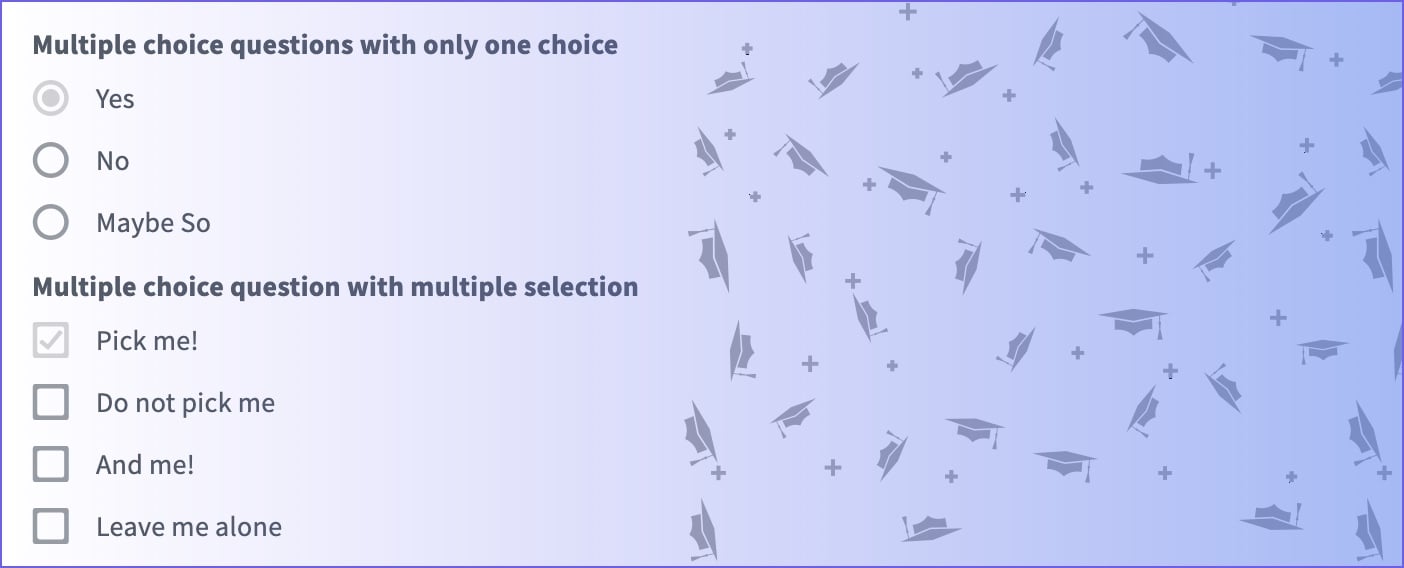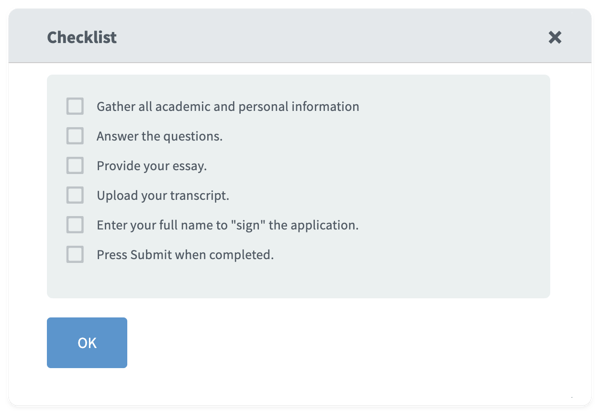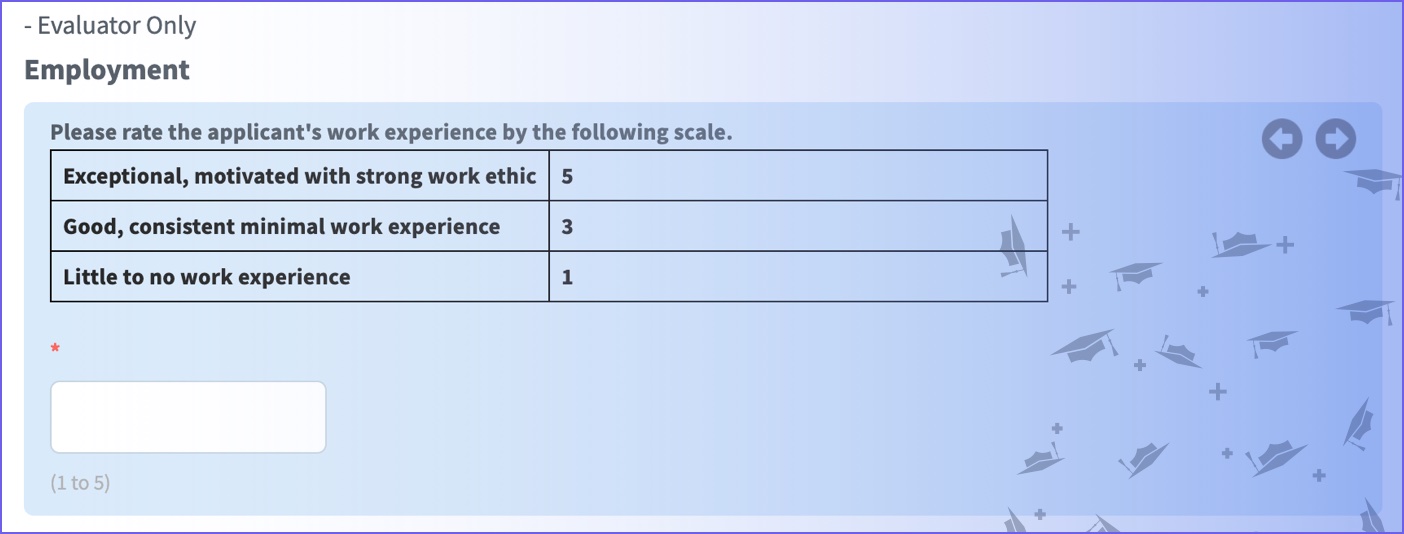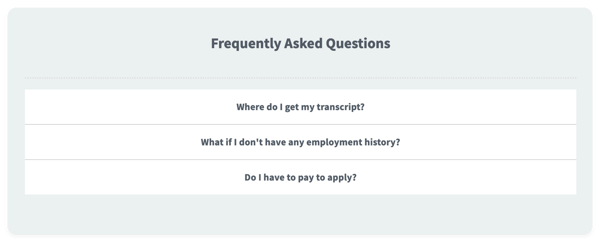There is nothing quite like working in the field of scholarship management. The idea that you could help someone achieve their academic goals while easing their financial burden - it’s a rewarding role to be in to say the very least. That’s not to say it’s without difficulties, however. A lot of work goes into managing a scholarship program from start to finish. That’s why we wanted to put together a guide to help you manage all the moving parts. In this guide, we’ll cover all the elements needed to run an effective program, hopefully with as few hiccups as possible.
Table of Contents
|
CHAPTER 1 |
|
CHAPTER 2 |
|
CHAPTER 3 |
|
CHAPTER 4 |
|
CHAPTER 5 |
CHAPTER 1
Creating the Program
While we wish we could tell you that selecting scholarship recipients was as easy as announcing that you’re giving money away, collecting names, and drawing them at random, you likely already know it doesn’t work like that. The truth is, when you start a scholarship program, how you go about choosing the recipients for the money requires a lot of consideration.
As one example of things you’ll need to take into account, you want to decide the type of candidate you would like to have as a recipient before you even announce your program. This requires setting scholarship guidelines that are in line with the goals and values of the scholarship program itself.

You also need to determine if your program will be merit-based, financial need-based, or a combination of the two. The simple fact is that there will only be so much money to be awarded, so deciding what type of person would be the ideal candidate early on will make it that much easier to find the right recipients for your scholarship.
Additional steps for managing a scholarship program include, but aren’t limited to:
-
Determining how much money you can give away, and where it is coming from
-
i.e. Will there be sponsors involved that expect recognition? Or will the funds be strictly donation-based?
-
Deciding the scholarship criteria for an award recipient
-
GPA, test scores, income requirements, extracurricular activities, etc...
-
Creating your scholarship application form
-
Collecting the applications from qualified candidates
-
Evaluating the applications that are collected
-
Awarding the scholarships

Now that you have a rough overview of what scholarship management entails, let’s cover some of these steps in greater detail.
The Scholarship Application Form Should Be Well Thought Out

Once you’ve determined how much money you have to give away and the type of candidate you feel is best suited to receive it, you need to consider what will be in your scholarship application form. Here are 8 Best Practices for Building Scholarship Application Forms:
One of the most critical steps in building your scholarship application form is defining your qualification factors. For example:
-
Are there geographic or school-specific criteria?
-
Can undergraduate and graduate college students apply?
-
Is the scholarship gender specific?
-
What about GPA? Does that factor into the qualifications?
-
Is the scholarship geared towards one field of study?
Doing this will help to prevent unqualified candidates from filling out an application, which in turn will save you time in the evaluation process and will save time for the applicant themselves.
Your application should be user-friendly with things like multiple-choice questions, and comprehensive instructions for long-form and essay questions.
If the application is too complicated, or if it feels overwhelming, applicants will be far less likely to go through the process of filling it out. To combat this here are two tips to aid you in your design:
- Break the application into pages and sections. Applicants can more easily process and respond to the questions/prompts if they are presented in “bite-size chunks”
- Don’t ask for more than you really need. Only require the relevant information that qualifies or eliminates applicants

The application should also hide questions from candidates when they are not relevant. For example, if the applicant states they are unemployed, there’s no point in asking them if they are working full-time or part-time, or what they are getting paid per hour.
Using “if this then that” rules, you can ensure that only the most relevant questions are visible to individual applicants. This also helps you and your team when it’s time to sort out who is eligible and who is not once all applications are submitted.
Using specialized fields for dates and phone numbers ensure uniform answers. For example, requiring 10 digits for a phone number lets the applicant know you want the area code included.
Specialized fields ensure uniform answers - again eliminating the guesswork and saving you time in the evaluation process.
Answer validation prevents errors. For example, if the highest score for the ACT is 36, a number like 48 would be flagged as an error.
This helps ensure that the data you receive is more accurate, and that mistypes are less likely by the applicant.

Make it easy for applicants to acquire recommendations. This will not only make the experience more pleasant for the candidate but for the evaluation team as well. You can make it easier for applicants to acquire these recommendations by doing the following:
-
Encourage applicants to receive recommendations early
-
Put the recommendation requests near the beginning of the app with clear and strong instructions on how to get recommendations
-
Include clear instructions for the people recommending the applicant to fill out their recommendation form
-
Minimize attachments, or eliminate them completely to make evaluations faster
-
Include a “thank you” note for the people recommending the applicant
Use Calculations to Minimize Math Errors. Let’s say the form includes a space to add the income of parent 1 in field A, parent 2 in field B, and any additional income that may exist in field C. The calculation you would create would be A+B+C and the result would auto-populate in another field.
This will minimize the errors your evaluators have to deal with and make the process of selecting recipients smoother.
Using scholarship management software is the fastest and simplest way to build your scholarship application form. It makes it easy to customize your scholarship application to your desired specifications and it allows you to use powerful features that make the whole process easier, all of it without requiring any coding.
Wouldn’t it be nice to have a scholarship application template to help you design your own application form for your upcoming scholarship program? Yes, it would. That’s why we’re sharing not just one scholarship application template with you, but five! So you can jump-start your scholarship program the right way. Here are the templates:
CHAPTER 2
Collecting Applications
The process of collecting applications can be exciting, but it can also be one of the more stressful elements of scholarship management. The two main goals during this process are to keep your applicants engaged, and to stay organized as applications come in.
Keep Your Applicants Committed Throughout the Application Process
Two things a scholarship program manager wants to avoid when possible are incomplete applications, and receiving forms from unqualified applicants.
To avoid unqualified applicants, you can add qualifying questions and rules to your applications that eliminate individuals before they even begin the application process. In the event an unqualified candidate somehow gets to the application page, it should be abundantly clear from the very beginning who is and is not qualified to apply.

There’s nothing more frustrating for an applicant than beginning an application and getting halfway, or even a quarter of the way, through the form only to realize they have no chance of being a recipient.
Keeping qualified applicants committed is a little trickier. To keep applicants engaged during the entire program period, at the minimum you need to do the following:
Stay in touch with your applicants. This means doing things like sending reminders of important dates, thanking applicants for submitting application materials, and letting them know who the recipients of the scholarship were.
Let applicants see the scholarship application form before they apply. This will help program administrators avoid incomplete applications because applicants will know what is ahead of them instead of getting frustrated going through what seems like a never-ending application.

Offer checklists and assistance where applicable. Providing a checklist of items that will be needed to fill out an application will help candidates prepare in advance. And, offering question-level help on application questions will prevent frustrated applicants from abandoning their forms or filling things out incorrectly.
Make Your Job as Scholarship Program Manager as Easy as Possible
Once applications start coming in, the job of the scholarship program manager becomes a lot more intense. Think of it like a play you’re directing. Planning rehearsals, courting investors, and even picking your cast feels easy at first. Then, as opening night approaches, the pressure is on to have all the pieces in place for sharing a smooth production with your audience.
It’s the same with scholarship management. You ask for donations/sponsors, select an evaluation team, and announce the scholarship. Then as applications come in, the tension mounts as you work to find and announce the perfect recipients.

Scholarship management software gives you all the tools you need to make your job much easier, and save you a lot of time in the process. Here are just a few examples of how using software removes bottlenecks to give you back the hours in your day:
-
Our software features auto-responders and broadcast reminders that automatically remind applicants of pending deadlines, required materials, and important dates.
-
With question-level help on the applications, and the ability to add a frequently asked questions section to your forms, you’ll have less application related correspondence to manage.
-
Even evaluation of the applications becomes much more simplified thanks to our software. Speaking of which….
CHAPTER 3
Evaluating Applications
This is perhaps the most time-consuming and difficult element of scholarship management. The key to making this process easier is to have well-defined scholarship guidelines and an established scholarship rubric to make quick work of evaluating the candidates.
Carefully Choose Your Review Team
If you hope to run an efficient application review process for your scholarship program, it all begins with your team members. Who is an ideal team member? They will either work in a field related to your scholarship, or they are someone who exhibits the ideals and values of your intended award recipient.
How many reviewers do you need for your team? That honestly depends on how much time you have to select recipients, and how many applications you anticipate receiving. If you receive 100 applications and a single team member can review five applications in an hour, you’ll need to fill 20 hours of review time. What if you get 20,000 applications? You’ll need to plan accordingly.

Of course, this is where scholarship management software also comes in handy! Using automation, rules, and a rubric, you can cut down the time spent evaluating applications drastically. For example, instead of being able to review five in an hour, your team members might be able to get through 20, 30, or even more applications per hour!
Scholarship Rubrics Simplify the Evaluation Process
Creating a scholarship rubric makes the task of evaluating applications much less daunting. Lots of seemingly qualified people may apply for your scholarship program, but a rubric eases the pressure of filtering through those applicants. For example, two people that are nearly identical on paper may have just slight variations that make one more qualified than the other. Using a rubric, your evaluation team will be able to point out those variations that much faster.
What should be in your rubric? For starters, you should include things like GPA requirements, income limits, expected standardized test scores, required extracurricular activities, etc… If candidate A meets all of the requirements, but candidate B is missing two, then you can easily eliminate B from the pool of potential recipients.
You can even develop a rubric for things like essay questions to make an assessment for your team easier in that area as well. For example, you could use a scale of 0-5 points with 0 being no response, and 5 being a thorough and appropriate response to the essay questions.

The more thorough you are with your rubrics, and point systems, the easier it will be for your evaluation team to swiftly filter through applicants. The easier it is to give a hard no on a candidate, the better.
CHAPTER 4
Managing it All
We haven’t even made it to the end of the first round of your scholarship program and we’ve covered a lot of material so far. Now we have to address the elephant in the room. For as rewarding as running a scholarship program is, it’s a lot of work to keep all the moving parts from going off track. If you aren’t careful, your scholarship program could turn into a complete trainwreck. We don’t want to see that happen to you!
Here are a few tips you can use to hopefully avoid disaster while managing your program:
•
Make a plan and then work the plan. Consider all possibilities, and all elements of your program before you ever develop your scholarship application. Think about things like eligibility requirements, deadlines, your goals - everything. The more you consider in the planning phase, the fewer surprises there will be as you move along.
•
Use validation and guidance for application questions and add an FAQ section to prevent unnecessary correspondence.

•
Use scholarship management software to make quick work of tasks like building your scholarship application forms, designing your evaluation rubric, adding qualifiers to filter out applicants, and so on.
•
Keep in touch with everyone throughout the entire process - your team, your donors and sponsors, your applicants, etc…
•
Utilize canned responses and email auto-responders.
•
Announce your recipients in a timely fashion, and use customizable templates for things like Scholarship Award Letters, Scholarship Agreement Forms, and Scholarship Rejection Letters. Here are some templates we made that you could use:
CHAPTER 5
Awarding Your Recipients
Now that you and your team have put in all the work, it’s time for the best part of running a scholarship program. Giving away the money! How you announce the recipients could be as simple as sending an email, or as elaborate as hosting an awards ceremony. Whatever way you choose, it’s amazing to know that you are positively impacting the lives of your recipients. That’s what drew you to the creation of your scholarship program in the first place.
Once you announce the recipients, the work isn’t quite over though. You need to have signed scholarship agreement forms for all of your chosen recipients, and then you need to begin the process of asking everyone (donors, evaluators, and applicants) for feedback about how the scholarship program was managed.
Feedback is critical because it lets you know how the community as a whole felt about your program. It tells you where the flaws were, and how you can improve for the next round. Your applicants, evaluation team, and donors/sponsors may have valuable insights that could make future programs easier and more enjoyable. Asking for feedback also lets everyone involved know you care, and that can help you build long-lasting relationships.

If you have made it this far, congratulations! We know how much time and energy goes into running a successful scholarship program. We hope you’ve enjoyed this Ultimate Scholarship Management Guide for Program Managers.
We hope this guide has been helpful in giving you some ideas for making your scholarship program more impactful and efficient.
Thanks to our scholarship management software, it has never been easier for program managers to effectively handle a scholarship program with ease. SmarterSelect has helped countless program administrators make quick work of their own scholarships, and we can help you too. We’d love to help you make your next scholarship program your best one yet. Click here to schedule your demo with SmarterSelect, and see why we’re the best choice for scholarship management software.
Online Applications Made Easy.
Priced for non-profits. No set-up fees.
No long-term contracts. Powerful features.
Go live in less than 24 hours.

